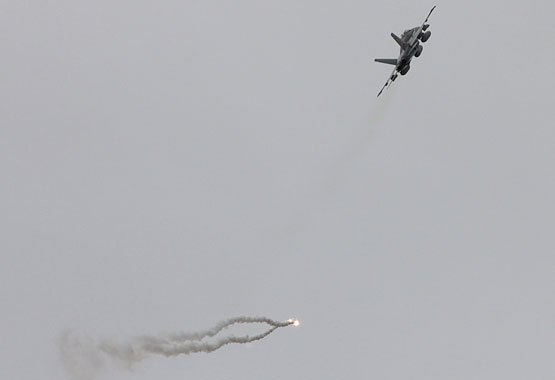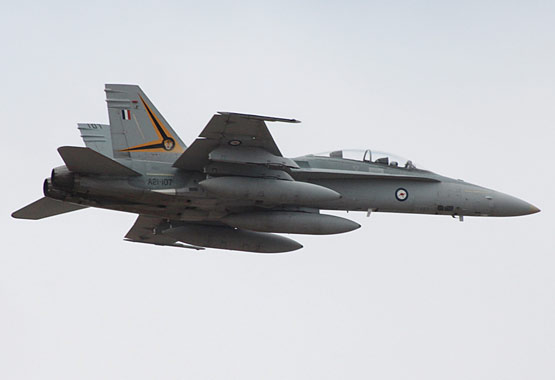
Discuss (Up to OJB's Warbirds 2010 Page) HornetsThe photo at the top of the page shows an F/A-18 Hornet releasing flares during its first visit of the day. Flares are used to confuse heat seeking missiles which usually lock onto the aircraft's engines. The flares are much hotter and the missile will usually lock onto that instead, especially if the aircraft changes direction quickly and reduces power. 
Getting good photos of the Hornet isn;t easy because it does move fairly quickly, according to the commentator one run over the airfield was at 1,000 kilometers per hour. Of course, that's less than half its top speed.
Specifications... Sources: Wikipedia, RAAF, Warbirds Over Wanaka 2010 Programme. |
![[Up]](../XuShared/Up3B.jpeg)
![[Comment]](../XuShared/Comment2B.jpeg)